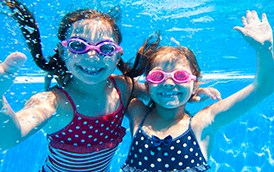 We’ve all heard lots of old wives’ tales when it comes to swimming and eating.
We’ve all heard lots of old wives’ tales when it comes to swimming and eating.
To set the record straight, here are some of the most popular swimming-related myths and our take on their legitimacy.
1. You have to wait an hour after you eat to swim otherwise, you will get cramps.
Answer: Some truth. We’re willing to bet your mother told you this one quite a bit as a kid. The truth is, when your stomach is digesting food, more blood goes to your stomach to aid in digestion, leaving less blood in your other muscles.
If you overwork those muscles while swimming, you might get a cramp, but you also might not.
Chances are you’ve already testing out this theory on your own, but to avoid making this “momism” a reality, be sure to eat a lighter meal and go for a swim once you’re finished.
2. There’s too much chlorine in the pool because I can smell it!
Answer: False. In this case the opposite is actually true… which leads us to a short swimming pool water chemistry lesson: the chlorine in your pool attaches to bacteria and creates chloramines.
When you shock the pool, these chloramines turn into oxygen and escape into the air.
This is the reason why you can smell the chlorine, when it’s in the air, not in the water. When you smell it in the air, that means it’s not in the water doing its job, and more chlorine needs to be added.
3. Chlorine will turn my blonde hair green.
Answer: False. Again, chlorine is not the culprit— it’s copper! Some algaecides are copper based and the oxidized metals in the water can attach to the protein in the hair shaft.
No worries, it can easily be removed by a shampoo that strips the color or by conditioning the hair BEFORE swimming.
4. Chlorine burns your eyes if you open them underwater.
Answer: False. Here we go with chlorine getting a bad rep again! It’s not chlorine that burns your eyes, but water with an unbalanced pH level.
If you pay attention to your swimming pool water chemistry and maintain a pH between 7.2 and 7.6, you don’t have to worry about burning red eyes after swimming.
5. A clear pool is clean and healthy.
Answer: False. Don’t trust the pool’s appearance—trust the chemistry!
It is important to test the water every week and pay attention to the water chemistry for swimming pools to make sure that there aren’t unhealthy levels of micro-organisms.
So the next time you hear one of these swimming pool legends, you now are armed with the truth!
And as much as we are all disappointed that #5 isn’t true, maybe we all can keep that legend going anyway.
If you have questions about how to care for your swimming pool, it is best to consult with your local pool service professional or pool store.

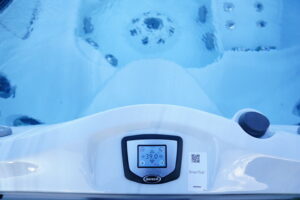
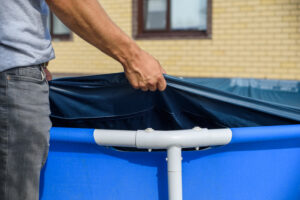
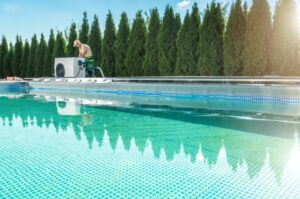
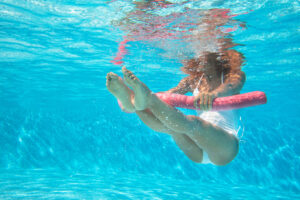

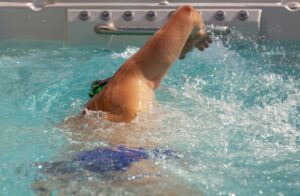

 by
by 